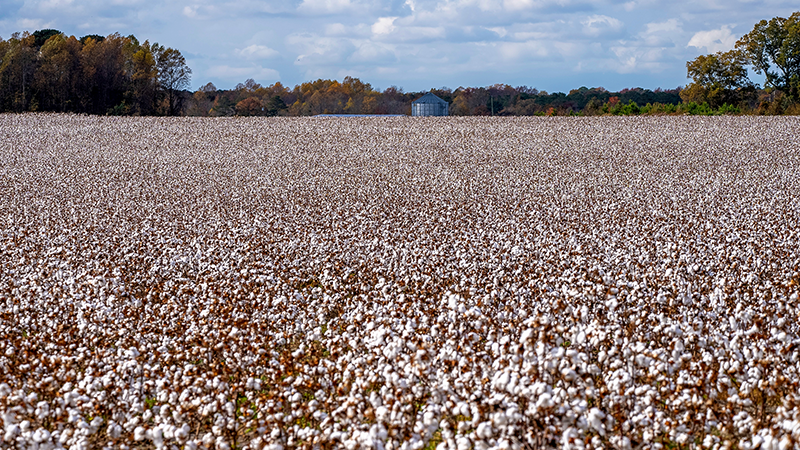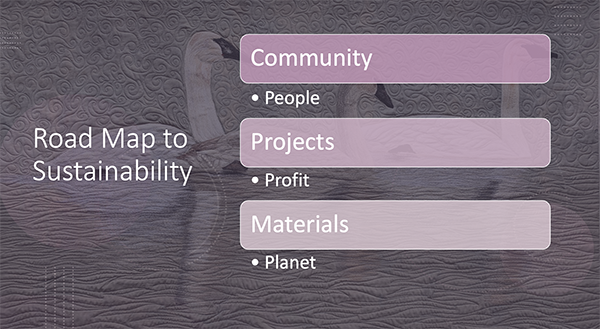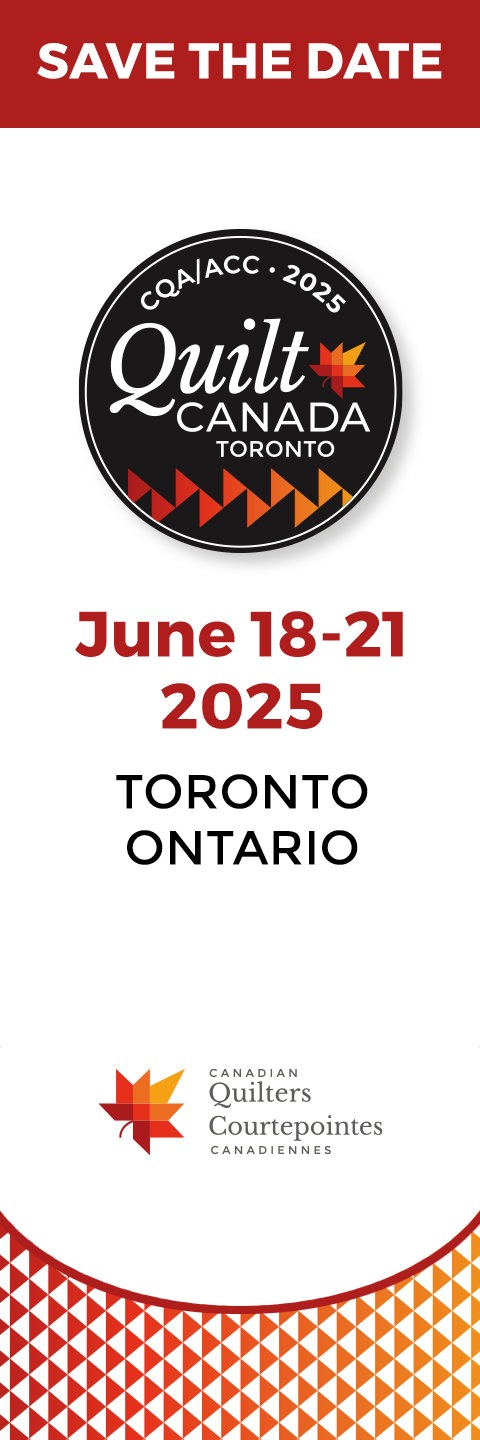In the second article in a series on sustainable quilting, Bridget O’Flaherty discusses People, Profit, and Planet, and how those concepts relate to quilting. We also learn more about the manufacturing of cotton, and the most common certifications for sustainable fabric production. As always, Bridget has tips for how quilters can continue on the journey of sustainable quilting, use our power to encourage change, and recognize how quilting positively impacts our own well-being and that of our communities.
First, I want you to keep in mind that quilting is inherently sustainable for the most part. We save our scraps, contribute to community projects, and create beautiful art and quilts that are handed down to become family legacies. These actions play a big part in creating a sustainable future; quilters are doing a lot of the work already. But second, we also need to consider that quilting is part of the textile industry, which has had a huge impact on the environment over centuries, and continues to, through its long supply chains and waste production.
People, profit, and the planet need to be considered when we talk about creating sustainability, the core of which is meeting present needs without compromising future generations’ ability to meet their own needs. In the quilting world, this is a complex concept; it’s so broad and open to interpretation. Consider this: the community you engage with, the projects you work on, the benefits you get from that, and the materials you use, are what make sustainability possible. But as quilters, you don’t have to do everything, you don’t have to do all of it yourself. You can contribute to change wherever you are on your own journey. I’m going to tell you more about why you should and what’s being done to create change in the industry.
People – Community
People are an integral part of sustainability. We need to take care of ourselves in order to be able to take care of our communities. Otherwise, we spread ourselves too thin. Working with textiles can be therapeutic and healing for many. While practising our craft and connecting with our communities, we nourish ourselves – we fill our cup – so we can then contribute outside of ourselves. That’s what quilters have always done, right? Quilters are community-oriented people. When we make changes in our own lives, it creates ripples that can become waves of change. It’s important to consider equity, though. Not all quilters or would-be quilters, have the same privileges of space, time, or money to explore this craft.
Profits – Benefits
Profit is an interesting concept. We often look at it that through the capitalist lens of financial benefits, and are faced with the dilemma of balancing access to cheap goods with the impact those goods have on the planet and the people who produce them. There is an imbalance of equity in our world and the textile industry is rife with problems that stem from poor living and working conditions, low wages, forced labour, and poverty. The choices we make when we purchase materials have an impact on that, and I think we have more power to effect change than we realize.
There is another lens through which to view profit, and I encourage you to explore it. The benefits we receive and share when creating – and gifting those creations, contributing to a community project, helping others in the journey of creating – are not measured in dollars. They are measured in happiness and joy, a scale that is very important. So, while we should think about the dollar (the reality is we live in a commercially-driven world, and changing that is difficult), let’s also value happiness and joy, because they are the fuel that actually keeps us going.
Planet – Materials
We know the impacts of the textile industry on the planet – we learned in the previous article that it is one of the top five emitters of CO2. An enormous amount of water is used, and contaminated wastewater is often sent back into waterways. The cumulative effects of contamination, as well as the enormous problem of textile waste, globally, are quickly becoming problems we can’t ignore. The question is: how to stop or slow the system?
We’re up against a powerful marketing machine. It can be difficult to resist buying the latest things. As we’ve discussed, quilting is really good for our mental well-being. Many of us have reached a point in our lives when we feel we’ve worked hard and should be able to purchase what we need to express our creativity through quilting. We quilt because it makes us feel good and that helps us get through tumultuous times. This is all true, and the projects are really good for us. However, it’s the way the materials are produced that’s maybe not so good for us. Maybe that could change.
THE COTTON TRAIL

Let’s talk specifically about cotton, one of our go-to quilting fabrics. Cotton represents one of the oldest known fibres, dating back at least 5,000 years. Today, it’s a $35-billion dollar industry. If we look at the cotton trail – what it takes to get from seed to quilt store – it’s a very complex system.
Seeds – often genetically-modified seeds – are planted as single crops in the same fields every year, in a practice known as mono-cropping. Those seeds require an enormous amount of water to grow. The pesticides and agrochemicals used are also really hard on the soil. Plus, planting and harvesting require machinery that is run by fossil fuels. Similar processes are used to harvest other fibres; cotton represents 30-40% of the global fibre requirements.
After harvesting, the cotton is moved to a mill for processing, which requires more water, chemicals, and bleach. Emissions are released into the air, and also into the groundwater. Wastewater from cotton mills is often laced with chemicals and toxins that break down and cause harm to the local environment. And there is very little industry regulation in the locations where the bulk of cotton is processed. Improvements have been made in the last few decades, but the industry has a long way to go.
The vast majority of people who work in the cotton industry are from developing countries; 250 million people worldwide are employed. Most workers are subject to very poor working conditions, in terms of the amount of money they make and the detrimental effects on their health – it’s is not a well-monitored industry. This is where labelling and certification programs can help.
We are starting to see an increase in organics and the ethical production of materials. Labelling programs go a long way toward ensuring materials are
produced with minimal harm to the environment, and they support higher wages and better working conditions.
Sustainable Certifications
There are a lot of different labels and certifications out there; it can get quite confusing and overwhelming. Most of them are voluntary standards where producers or manufacturers pay for participation. The most credible labels will have third-party verification of the standards. I will dig into a few of the more common ones.
Global Organics Textile Standard (GOTS) – Officially and internationally recognized, this standard is currently one of the most trusted certifications for organic textiles. A product’s organic status is confirmed at every stage of production, from ginning to labelling. All aspects of manufacturing are considered, including the use of biodegradable and toxin-free dyes, and low-impact wastewater treatment. There are social considerations that are accounted for as well, ensuring ethical labour practices.
OEKO-TEX – The STANDARD 100 label signifies that each component, including threads, buttons, and other accessories, is tested and avoids thresholds for harmful substances. A large number of regulated and non-regulated substances are tested. The criteria catalogue of substances is updated at least once a year and expanded with the latest scientific knowledge or statutory requirements. Products with the OEKO-TEX STANDARD 100 label are considered safe for human use. There are also other standards that OEKO-TEX administers that consider the working environment and social responsibility of the manufacturer.
Better Cotton Initiative (BCI) is the largest cotton sustainability program in the world, aimed at making cotton production better for the environment and for those who grow it. Despite not being physically traceable to end products, Better Cotton farmers benefit from a demand for Better Cotton products. While this means you can’t actually buy ‘Better Cotton products,’ you can find companies that support the BCI program.
The Global Recycling Standard (GRS) includes third-party verification of the content of recycled materials in a final product. The standard applies to the full supply chain and addresses traceability, environmental principles, social requirements, chemical content, and labelling.
Greenwashing
Certifications and standards ensure the products you buy meet standards and are verified through systems and testing. Certification can be costly to attain, and some small producers can’t afford to go through the process, even though they may be meeting the standards. This is different from the many companies that are jumping on the “green” bandwagon, using buzzwords and branding tactics in their marketing, so they appear to be “eco-friendly”. It’s always best to do research and verify the claims a manufacturer or producer is making. Read the labels and ask questions if you are unsure about a product. Greenwashing is rampant in a competitive industry.

How you can help
If you’re on a journey to become more sustainable in your practice, here are a few suggestions.
- Find a community that serves you, whether you need support or are ready to provide support to others. Community is so important for sustainability.
- Start working on projects that fill your cup, that have meaning and purpose for you, and then share that experience.
- When sourcing materials, consider those that have a positive impact; upcycle, recycle, buy organic, buy certified materials.
- Ask your local quilt shop to bring in materials you are interested in. You have power as a consumer to be the change you want to see.
- If you are interested in joining a community online that connects around sustainability, find groups like the Sustainable Quilting & Textiles Group on Facebook.
In Sustainable Quilting Part Three (look for it here on the Blog in mid-May, 2023), I’ll share some of the amazing work that is being done by artists and manufacturers around the globe. It’s an exciting time to be creating with sustainability in mind!
 Bridget O’Flaherty is a Canadian free-motion embroiderer, quilter and textile artist, teacher, speaker and podcaster with a decade of experience in the sustainable building industry. Known as The Sustainable Quilter, she shares her passion for the natural environment in her art and online community.
Bridget O’Flaherty is a Canadian free-motion embroiderer, quilter and textile artist, teacher, speaker and podcaster with a decade of experience in the sustainable building industry. Known as The Sustainable Quilter, she shares her passion for the natural environment in her art and online community.
bridgetoflaherty.com
bridgetoflaherty.com/threads-of-sustainability-podcast/
@thesustainablequilter

